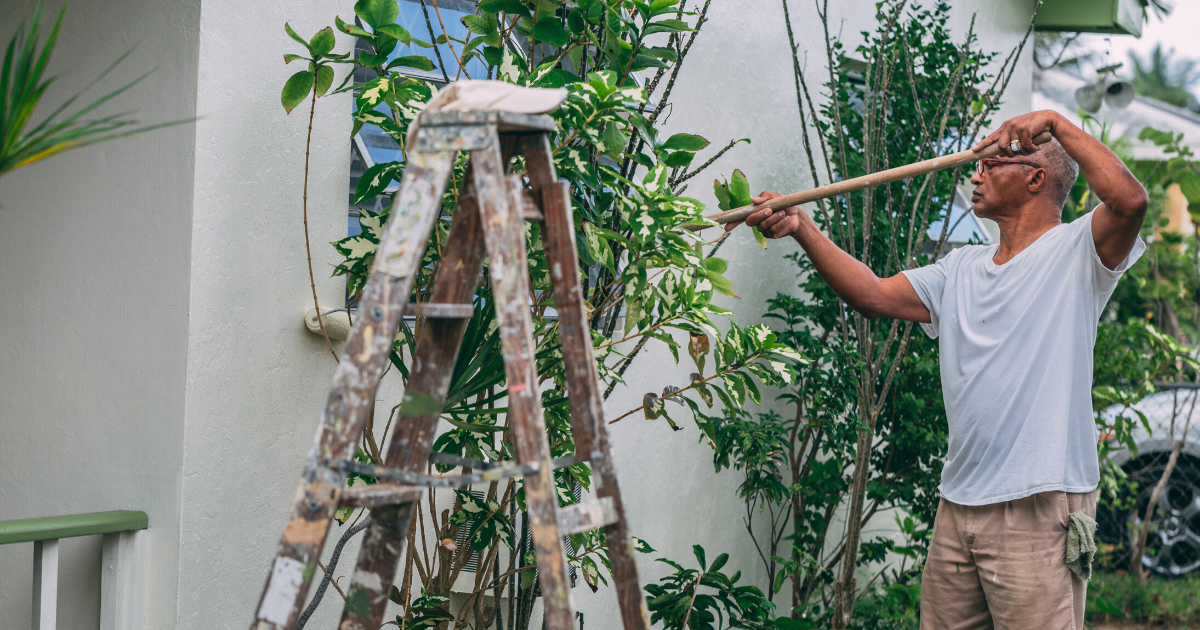One of the most hotly-debated topics among rehabbers is whether to tackle repairs on your own — the DIY route — versus hiring the work out. Or a hybrid approach that combines the two.
The reason for “controversy” is because the decision typically boils down to one’s business philosophy, and rehabbers love to debate which approach is best: Is DIY a means of being smart with money, or is it a surefire way to keep playing small?
Many real estate investors have gotten their start with a credit card and their own tools. Many others have also been one-and-done with that strategy. (Obviously we recommend a reputable lender, for one thing!)
So which route should you choose?
It depends.
Assuming you are not a professional contractor — for whom the conversation is typically much different — take some time to answer these questions:
- What’s your goal for this individual project as well as your long-term goal?
- What’s your budget?
- Did you run the numbers correctly?
- What’s your skill level? (Be honest!)
And above all, keep this rule of thumb in mind: if it requires a permit, the job is usually best left to a professional.
Know your real estate goals
This is a three-parter: baseline ROI, minimum profit, and number of simultaneous projects. When you know the answer to each of these, you get much clearer about what, if anything, to DIY.
Have you determined your baseline ROI and your minimum profit? It’s important to keep these two factors in mind so you’re consistent each time you evaluate a property. It’s faster and easier to decide whether to make an offer when you have a consistent plan, or a standard operating procedure.
A lot of rehabbers set a minimum ROI of 20 percent profit; in other words, if a property sells for $200,000, they net $40,000. This allows a cushion for unexpected expenses (in addition to the usual contingency in your budget) and is a figure that lends itself well to making a project worth your time. Remember, that 40k can easily take six months or more to earn, from purchase to resale.
It can also be a good idea to keep a minimum net profit figure in mind, whether that’s $20,000, $25,000, or more.
Armed with a plan, you can more easily make the rest of your decisions. For example, as you evaluate a project, can you profit 20 percent while still hiring everything out? Maybe that’s the best use of your money, freeing up your time to do things like marketing or focusing on another rehab.
Or maybe 20 percent is in reach only if you DIY some of the work, and you’re able to take on that labor. Perhaps you even enjoy doing it. If so, go for it — as long as it aligns with your overall business goals.
Some investors take on a portion of the rehab work early in their careers because funding is tight and they want to get those first projects done. They might not be savvy in evaluating repair costs. And perhaps they’re only able to make a purchase if they DIY some or all of the repairs, so they nurture and grow their reserves with each rehab until their budgets are bigger.
Either way, the decision whether to DIY is guided by a vision and that standard operating procedure.
Multiple projects at once?
If your goal for growing your business includes rehabbing multiple properties simultaneously, you may find that it doesn’t make sense for you to DIY. Not only will you need to manage your own time, but you’ll need to coordinate your work with multiple contractors at different addresses.
Juggling multiple properties is about more than funding. It involves increasingly complex moving parts, schedules, and people.
This also begs the question of whether you’re working in your business or on your business (there’s that debate again). When you know what your business is, you can effectively answer the question. Maybe it’s one project at a time. Maybe you’re aiming for 20 at a time. There’s no right or wrong.
Having established the guiding principles for deciding whether to DIY or not, here are some specifics on what lends itself well to DIY versus what doesn’t.
Cosmetics: Go for it
If it’s not structural, there’s very little risk. And you might save yourself a decent amount of money.
You can purchase and install cabinet hardware, put in a new mailbox, and update the numbers on the house.
A lot of rehabbers will paint the interior themselves, which could save you as much as a few thousand dollars, depending on the size of the property and the extent of prep work. Make sure you do it right, however. Bad patching and sloppy lines will catch a buyer’s eye, leading them to question whether the rest of the work on the house was slipshod.
Make sure you consider the time spent, too. Can you do a job as quickly, or almost as quickly, as a contractor? As a rehabber, you don’t have the luxury a homeowner has when deciding whether to DIY. You’ve got holding costs to consider in addition to everything else; every additional day the job takes is another day’s worth of taxes, mortgage, and insurance that cuts into your profit. So tack that onto your equation.
Demo and Cleanup: Maybe
Some rehabbers save money by doing demo and cleanup themselves, saving on labor costs and leaving the technical portions of the repair for a contractor.
This can be effective, but proceed with caution. You need to be aware of wiring and plumbing in those walls you’re taking a sledgehammer to so as to avoid personal injury and/or creating a bigger problem.
This is also where a little math comes into play. Calculate the hours and multiple by the rate you’d pay someone to do the same job. Chances are, a lower-paid subcontractor would do demo and cleanup.
If you’re looking at 10 hours of work for a $20/hour worker, is a savings of $200 worth the time to you?
Electrical, Plumbing, and HVAC: Be Careful
A lot of smaller and simpler electrical jobs are doable by most DIYers: switching out light fixtures and switches, for example. And this is one area where the math might make sense. An electrician is a lot pricier than the cleanup guy, so maybe it’s worth it to you to swap light fixtures yourself rather than paying an electrician to do so.
Then again, you could also save money by having a handyman do the job instead of the electrician. Again, think of your goals and your budget.
If there’s anything at all you’re unfamiliar with, it’s always good to default to the electrician. And for any work that needs a permit, it’s a must. Some towns and cities won’t even approve a permit for certain types of jobs unless a licensed contractor has performed it.
Jobs like adding circuits, adding a subpanel, and rewiring a house (think gut job) are best left to the professionals.
The same goes for plumbing work. You can probably replace a faucet or even a toilet yourself. The question is, do you want to? And anything more complicated that requires a permit: give it to the pros.
HVAC work, as well as anything involving gas lines, needs a professional.
Hopefully you’re clearer on some do’s and don’ts of DIY and how it fits into your business goals. Always remember to make safety a priority and to never put yourself or your property at risk.







0 Comments